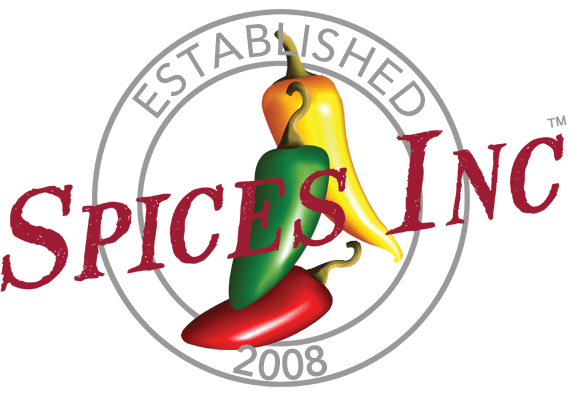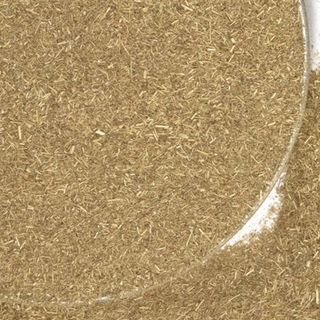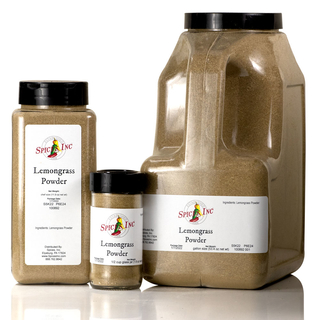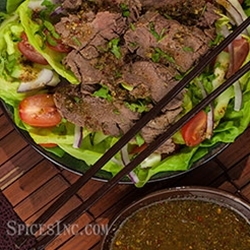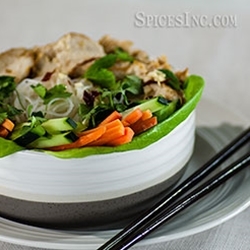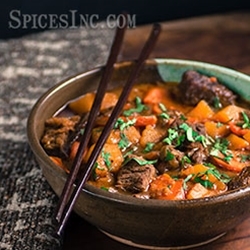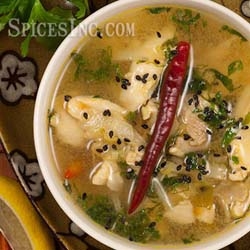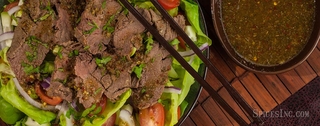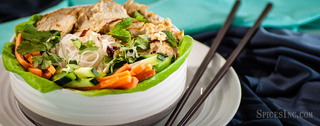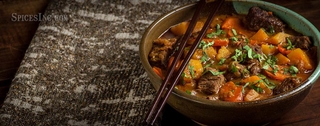Lemongrass Powder
Lemongrass Powder
Lemongrass Powder, Cymbopogon citratus, is also called dried lemongrass, powdered lemongrass or dehydrated lemongrass.
Lemongrass is used primarily in Indonesian, Malaysian, Sri Lankan, Thai and Vietnamese cuisine. This aromatic herb is also found in some Caribbean recipes, and its popularity in the US has grown rapidly in the last 15 years.
Businesses that frequently purchase Lemongrass Powder are American and chicken restaurants; catering companies; independent spice shops; olive oil shops; breweries, seasoning companies and companies that manufacture dressings ramen, salt, sauces and subscriptions.
Flavor Profile
Lemongrass Powder is tart and breezy with lemon-pepper notes along that enhance mint and ginger tones.
How To Use
Lemongrass Powder shines in Asian-inspired recipes. Try it in a Vietnamese Lemongrass Chicken Noodle Bowl or tossed into the marinade for a Spicy Thai Beef Salad. Blend this into the seasoning mix for a fragrant One Pot Vietnamese Beef Stew. Or use it to make a herbaceous Thai Basil Chicken Soup. If you want to try a fusion twist on a fish taco, try these Grilled Tangerine Hibiscus Mahi Mahi Tacos with Chile-lime Mango Slaw.
Lemongrass Powder is commonly used in teas, soups, and curries. It is also suitable for use with beef, chicken, fish, and seafood.
The light lemon flavor of Lemongrass Powder works well in combination with basil, chili powder, cilantro, cinnamon, cloves, coconut milk, galangal, garlic, ginger and turmeric.
| Also Called | Dried lemongrass, powdered lemongrass or dehydrated lemongrass |
| Species | Cymbopogon citratus |
| Ingredients | Dried, ground lemongrass |
| Flavor Profile | Tart, breezy, lemon-pepper notes, mint and ginger undertones |
| Oil content | .2 - .5% |
| Recommended Uses | Curries, soups and with beef, chicken, fish, and seafood |
| Cuisine | Indonesian, Malaysian, Indian, Thai, and Vietnamese |
| How To Store | Airtight container in a cool, dark place |
| Shelf Life | 6-12 months |
| Country of Origin | Egypt |
Nutrition Facts
Serving Size1 tsp
Amount Per Serving
Calories2
% Daily Value*
Total Fat0g0%
Saturated Fat0g0%
Trans Fat0g
Polyunsaturated Fat0g
Monounsaturated Fat0g
Cholesterol0mg0%
Sodium0.1mg0%
Total Carbohydrate0.4g0%
Dietary Fiber0.0g0%
Total Sugars0.0g
Added Sugars0g0%
Sugar Alcohol0.0g
Protein0.0g0%
Vitamin D0mcg0%
Calcium0mg0%
Iron0mg0%
Potassium0mg0%
*The % Daily Value (DV) tells you how much a nutrient in a serving of food contributes to a daily diet. 2,000 calories a day is used for general nutrition advice. These values were calculated and therefore are approximate. For more accuracy, testing is advised.
